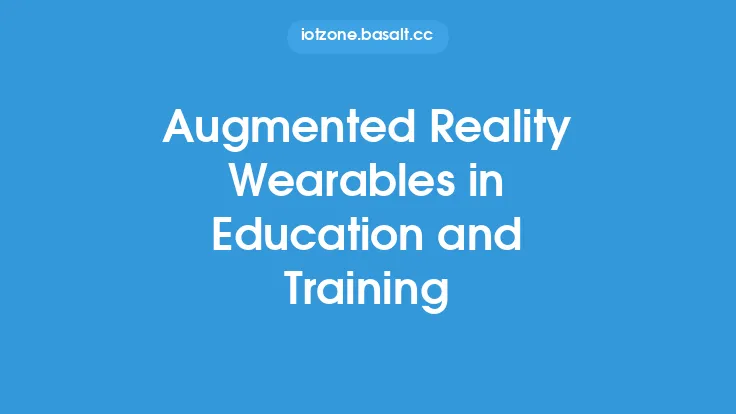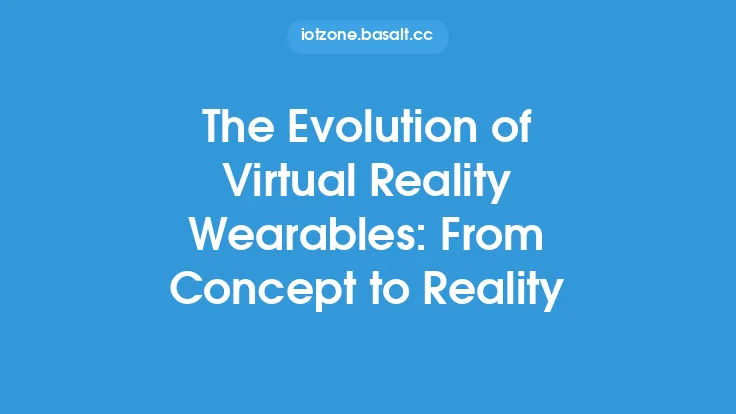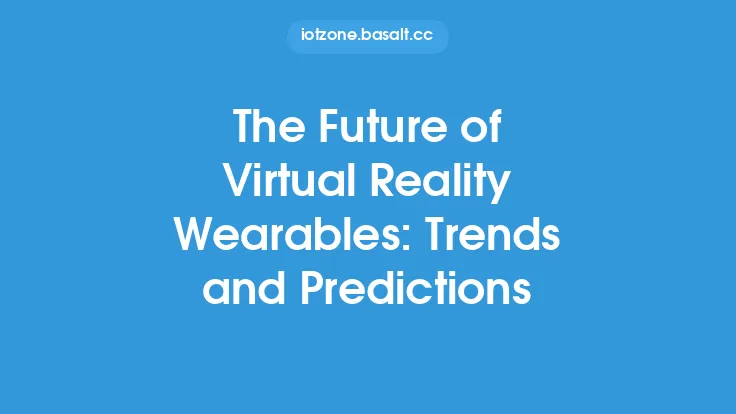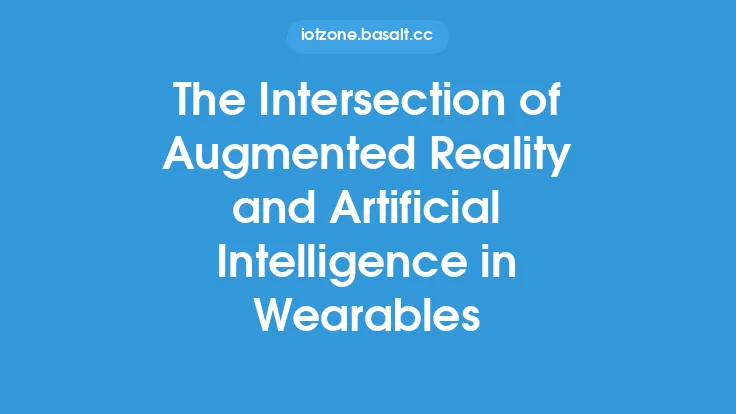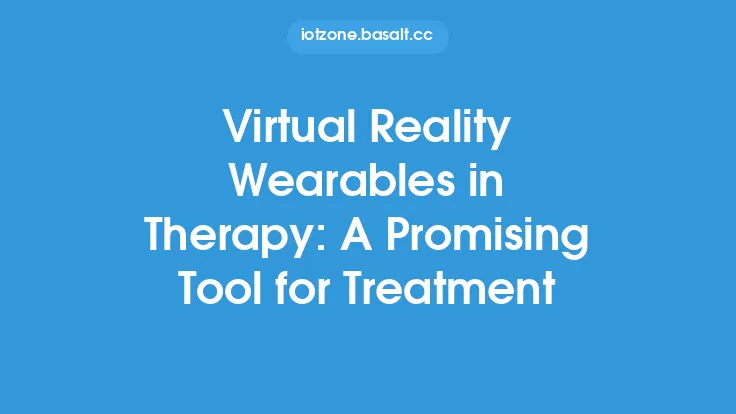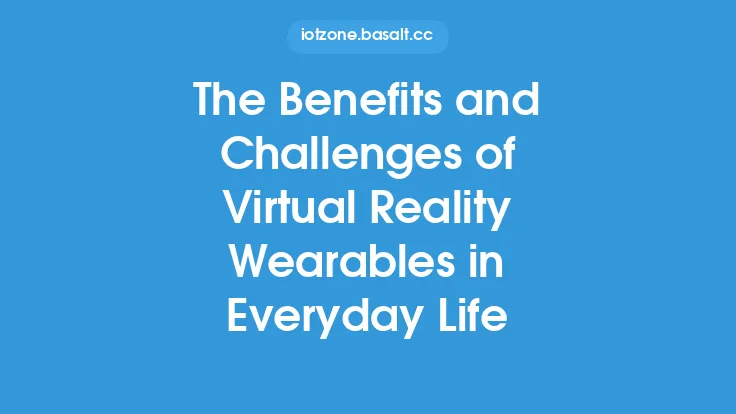The use of virtual reality (VR) wearables in education is transforming the way students learn and interact with complex concepts. By providing an immersive and interactive experience, VR wearables are making learning more engaging, effective, and fun. In this article, we will explore the benefits, applications, and future of VR wearables in education.
Benefits of Virtual Reality Wearables in Education
The benefits of using VR wearables in education are numerous. Firstly, they provide a highly immersive and interactive experience, which can increase student engagement and motivation. By allowing students to explore complex concepts in a virtual environment, VR wearables can make learning more enjoyable and effective. Additionally, VR wearables can provide a safe and controlled environment for students to practice and experiment with different scenarios, which can be particularly useful in fields such as science, technology, engineering, and mathematics (STEM).
VR wearables can also provide personalized learning experiences, tailored to the individual needs and abilities of each student. By using data analytics and machine learning algorithms, VR wearables can track student progress and adjust the difficulty level of the content accordingly. This can help to ensure that students are challenged and engaged, without becoming overwhelmed or frustrated.
Applications of Virtual Reality Wearables in Education
VR wearables have a wide range of applications in education, from primary school to university level. In primary school, VR wearables can be used to teach basic concepts such as geometry, fractions, and algebra. For example, students can use VR wearables to explore 3D shapes and models, or to practice math problems in a virtual environment.
In secondary school, VR wearables can be used to teach more complex subjects such as physics, chemistry, and biology. For example, students can use VR wearables to explore the human body, or to simulate experiments and investigations. VR wearables can also be used to teach languages, such as Spanish, French, or Mandarin, by providing an immersive and interactive environment for students to practice their language skills.
In university, VR wearables can be used to teach advanced subjects such as engineering, architecture, and medicine. For example, students can use VR wearables to design and simulate complex systems, or to practice surgical procedures in a virtual environment. VR wearables can also be used to provide training and professional development for teachers and educators, by providing a safe and controlled environment for them to practice and refine their teaching skills.
Technical Requirements for Virtual Reality Wearables in Education
To use VR wearables in education, several technical requirements must be met. Firstly, a high-performance computer or device is required to power the VR wearable, as well as a high-speed internet connection to access online content and resources. Additionally, a VR headset or device is required, such as an Oculus Rift or HTC Vive, which can provide a high-resolution and immersive experience.
Software and content are also essential for VR wearables in education. A range of educational software and apps are available, which can provide interactive and immersive experiences for students. For example, Google Expeditions provides a range of virtual field trips and expeditions, which can take students on a virtual journey to different parts of the world. Other software and apps, such as zSpace and Unimersiv, provide interactive and immersive experiences for students to learn about science, technology, engineering, and mathematics (STEM) subjects.
Challenges and Limitations of Virtual Reality Wearables in Education
Despite the many benefits and applications of VR wearables in education, there are also several challenges and limitations. Firstly, the cost of VR wearables can be prohibitively expensive, particularly for schools and educational institutions with limited budgets. Additionally, the technical requirements for VR wearables can be complex and difficult to set up, particularly for teachers and educators who are not familiar with the technology.
Another challenge is the lack of content and resources available for VR wearables in education. While there are many educational software and apps available, there is still a need for more high-quality and engaging content that can provide an immersive and interactive experience for students. Finally, there is also a need for more research and evaluation on the effectiveness of VR wearables in education, to ensure that they are providing a positive impact on student learning outcomes.
Future of Virtual Reality Wearables in Education
The future of VR wearables in education is exciting and promising. As the technology continues to evolve and improve, we can expect to see more advanced and sophisticated VR wearables that can provide an even more immersive and interactive experience for students. Additionally, the cost of VR wearables is likely to decrease, making them more accessible and affordable for schools and educational institutions.
There is also a growing trend towards the use of augmented reality (AR) and mixed reality (MR) in education, which can provide an even more interactive and immersive experience for students. AR and MR can be used to overlay digital information and objects onto the real world, providing a more interactive and engaging experience for students. For example, students can use AR and MR to explore 3D models and simulations, or to practice experiments and investigations in a virtual environment.
Conclusion
In conclusion, VR wearables are transforming the way students learn and interact with complex concepts. By providing an immersive and interactive experience, VR wearables can increase student engagement and motivation, and provide personalized learning experiences tailored to the individual needs and abilities of each student. While there are several challenges and limitations to the use of VR wearables in education, the benefits and applications are numerous, and the future is exciting and promising. As the technology continues to evolve and improve, we can expect to see more advanced and sophisticated VR wearables that can provide an even more immersive and interactive experience for students.
